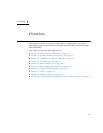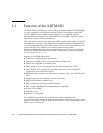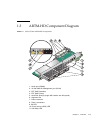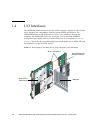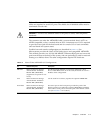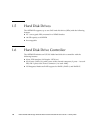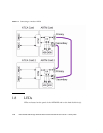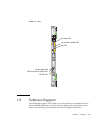
Chapter 1 Overview 1-7
Note – When the ARTM-HD is used with a Netra ATCA blade server, shielded
cables are required for serial I/O ports. The shields for all shielded cables must be
terminated on both ends.
Caution – You must use shielded cables for all ports to satisfy EMI compliance
standards.
The customer can order the ARTM-HD, build a custom module that is ACTA or
ARTM compatible, or buy a module from an IHV. A minimum set of I/O is required
to provide a boot path for the host board and for console I/O to issue commands
and read board and system status.
Possible boot and console configurations are described in
TABLE 1-3. Sun
Microsystems provides the Netra ATCA blade servers and compatible ARTM-HD.
This module provides one 10/100/100 MBASE-T Ethernet RJ-45 port and one serial
port from the host to the back of the system, and can optionally be used for network
booting as a diskless client. The other configurations require IHV hardware.
TABLE 1-3 Netra CP32x0 ARTM-HD I/O Configurations
I/O Hardware Required Description
Ethernet Netra CP32x0 SAS Storage
Advanced Rear Transition
Module HD (ARTM-HD)
(supplied as an option for rear
access)
The Management Ethernet port must be enabled as a boot
device in the BIOS before it can be used; the board can run in a
diskless client configuration.
SAS Netra CP32x0 SAS Storage
Advanced Rear Transition
Module HD (ARTM-HD)
Can be used for local boot; requires the optional ARTM-HD.
Serial data Netra CP32x0 SAS Storage
Advanced Rear Transition
Module HD (ARTM-HD)
The Serial port on the front panel provides the path of the
default console I/O. When the optional ARTM-HD is installed,
the module’s serial port becomes the path of the default console
I/O (see
FIGURE 1-1 for location).





